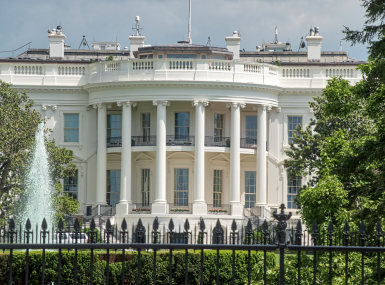Local government may keep Peace Cross, SCOTUS rules
The Bladensburg Peace Cross may stay the Supreme Court ruled in a 7-2 decision in American Legion v. American Humanist Association. According to Justice Alito, writing for the majority of the Court: “It has become a prominent community landmark, and its removal or radical alteration at this date would be seen by many not as a neutral act but as the manifestation of ‘a hostility toward religion that has no place in our Establishment Clause traditions.’” The State and Local Legal Center (SLLC) filed an amicus brief in this case supporting the local government.
In late 1918, residents of Prince George’s County, Md, decided to erect a memorial to honor soldiers from the county who died in World War I. The monument, completed in 1925, is a 32-foot tall Latin cross that sits on a large pedestal. Among other things, it contains a plaque listing the names of 49 local men who died in the war. Over the years, memorials honoring the veterans of other conflicts have been added to the surrounding area. In 1961, the Maryland-National Capital Park and Planning Commission acquired the Cross and the land it is on in order to preserve it and address traffic-safety concerns.
The American Humanist Association sued the Commission claiming the Cross’s presence on public land and the Commission’s maintenance of it violates the Establishment Clause. The Supreme Court disagreed. Significantly, the Court stated that “retaining established, religiously expressive monuments, symbols, and practices is quite different from erecting or adopting new ones. The passage of time gives rise to a strong presumption of constitutionality.”
According to Justice Alito, the Bladensburg Cross doesn’t violate the constitutional because it “carries special significance in commemorating World War I.” “[I]mage of the simple wooden crosses that originally marked the graves of American soldiers killed in the war, the cross became a symbol of their sacrifice, and the design of the Bladensburg Cross must be understood in light of that background.” Second, “with the passage of time” the cross “has acquired historical importance.” “It reminds the people of Bladensburg and surrounding areas of the deeds of their predecessors and of the sacrifices they made in a war fought in the name of democracy.” Third, the monument didn’t “deliberately disrespect[] area soldiers who perished in World War I” as no evidence indicates Jewish soldiers were excluded. Finally, according to the majority, “it is surely relevant that the monument commemorates the death of particular individuals.”
While the Court acknowledged that the cross “is undoubtedly a Christian symbol,” it opined “that fact should not blind us to everything else that the Bladensburg Cross has come to represent.”
Justices Ginsburg, joined by Justice Sotomayor, dissented arguing: “The Latin cross is the foremost symbol of the Christian faith, embodying the ‘central theological claim of Christianity: that the son of God died on the cross, that he rose from the dead, and that his death and resurrection offer the possibility of eternal life.’”
For the last 50 years the Supreme Court has applied the so-called Lemon test (at least sporadically) to evaluate Establishment Clause cases. Notably, four Justices criticized Lemon, and the Court didn’t apply it in this case.
The SLLC amicus brief argued that the challengers lacked standing to bring a lawsuit in this case. Justices Gorsuch and Thomas agreed writing that the fact they were offended by observing the cross doesn’t provide them standing. The brief also encouraged the Court to adopt a single, easy-to-apply standard to evaluate public displays so that their constitutionality may be resolved more quickly and easily.
Paul J. Zidlicky, Michael B. Buschbacher, and Christopher S. Ross of Sidley Austin wrote the SLLC brief which was joined by the National Association of Counties, the National League of Cities, the International City/County Management Association, the International Municipal Lawyers Association, and the Government Finance Officers Association.

Attachments
The Supreme Court found that a cross-shaped monument to World War I casualties on public land does not violate the Establishment Clause.
Related News

House passes legislation to increase the Crime Victims Fund
On January 12, the House passed the Crime Victims Fund Stabilization Act (H.R. 909) by a voice vote.

Federal district court issues ruling preventing the federal government from imposing immigration compliance mandates on grant recipients
On November 4, a federal judge in Rhode Island ruled that the U.S. Department of Transportation cannot condition federal grant funding on a recipient’s cooperation with federal immigration enforcement efforts.

